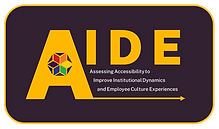

.png)
Nuance Culture Consulting
Champions of Inclusive Cultures
At FIC Human Resource Partners, we believe that organizational culture isn’t just a buzzword—it’s the heartbeat of your company.
Our mission?
To foster inclusive cultures of belonging where employees flourish, innovation thrives, and success becomes second nature.

making culture work
Why Nuance Culture Consulting?
We Are Professional Listeners: We know that understanding your distinct needs is the key to success. We pay attention—to you, your challenges, and your goals.
We Champion What Matters: Treating employees like expendable resources doesn’t empower people. We help you focus on what truly matters—the psychological safety and wellbeing of your employees – so they can do their best work, achieve the best results, and be their best selves.
We Are Relentless Overachievers: Our team pushes boundaries because exceeding expectations is our baseline. We’re the people who turn “what if” into reality.
Our Approach
AIDE: Making Culture Improvements Happen
Assess
Shifting cultures requires precision. That’s why we’ve developed our proprietary Organizational Culture Quality Assessment. This comprehensive survey dives deep into your organization’s culture, examining the Social, Ideological, and Operational dimensions of the SIO Model and your ability to deliver on the 9 Principles of Employee Care. The result? A roadmap that reveals misalignments, inclusion barriers, and untapped potential. Consider it your cultural GPS.
Interview
Numbers only tell part of the story. Our approach goes beyond data. We engage in extensive qualitative interviews—from leadership to historically excluded communities. We listen, learn, and uncover the nuances that matter. Understanding your people is the first step toward meaningful change. These conversations fuel our insights, leading to actionable recommendations.
Develop
Turning insights into impact—that’s our sweet spot. We craft focused action plans that address cultural pain points head-on. From policy enhancements to equity-driven protocols, we’re all about creating a level playing field. Our Nuance Culture Academy training equips your team with the tools they need to thrive. And when it comes to communication, we don’t just talk the talk; we walk the walk. Expect campaigns that resonate, values that inspire, and structural shifts that align with your strategic vision.
N
Name your culture goals and values
We work with your organization's leadership to identify and articulate the desired culture and values they want to foster.
U
Understand the current culture and employee experiences
We conduct assessments, surveys, and interviews to gain a deep understanding of the existing organizational culture and how your employees perceive and experience your culture.
A
Address the gaps, challenges, and misalignments
Based on the findings from the assessment phase, our consultants identify areas where your current culture is not aligned with the desired culture or where there are barriers to inclusion and belonging. They we develop focused initiatives and action plans to address them.
N
Navigate through change and improvement
Our consultants guide your organization through the process of implementing the culture improvement initiatives, providing project management, ongoing support, and course corrections as needed.
C
Collaboration
Our consulting process involves close collaboration with the organization's leadership, HR, and employees to ensure buy-in, engagement, and sustainability of the culture transformation efforts.
E
Employee engagement and experience
The ultimate goal of our culture consulting work is to create a more inclusive, equitable, and engaging employee experience that fosters a sense of belonging and enables all employees to thrive.
Engage
Transformation isn’t a solo act. Our team works with you to implement culture improvements. We oversee the rollout of initiatives through project management, tracking engagement levels, and gathering continuous feedback via pulse surveys. But it doesn’t stop there. We provide ongoing support for your culture working teams, facilitating training and coaching.
This hands-on collaborative process cements lasting culture improvements tied directly to your strategic goals. And yes, progress is quantified—we follow up with annual organizational culture assessments.
Our Services

AIDE Culture Improvement Program
Assessing Accessibility to Improve Institutional Dynamics and Employee Experiences.
Building an inclusive, equitable culture where every employee can thrive is not only the right thing to do – it's a strategic imperative. That's why we've developed the AIDE Culture Improvement Program. It's a comprehensive, data-driven approach to making meaningful, sustainable change.
LGBTQ+
Consulting
Our LGBTQ+ Inclusion Consulting Services applies an LGBTQ+ lens to our culture improvement and policy development works.
We help organizations create environments where LGBTQ+ employees can thrive, and inclusive policies that support their needs. Partner with us to unleash the full potential of your LGBTQ+ talent and demonstrate your commitment to equality.
policy review & development
Policies are not neutral. They have the power to perpetuate inequities or drive systemic change.
That's why we've developed a rigorous approach to crafting and revising policies that advance diversity, equity, and inclusion (DEI) in organizations. Our Equity Advisors, part of our Nuance Culture Consulting team, apply a proven four-question framework to assess, revise, and develop policies through an equity lens.
Accessibility audits
Accessibility is about more than just meeting legal requirements – it's about creating spaces and experiences that are genuinely welcoming and usable for all.
That's why our Accessibility Audit Services go beyond mere compliance with ADA and WCAG standards. We take a holistic, human-centered approach to assess and enhance accessibility across multiple dimensions, considering the diverse needs of individuals with disabilities and neurodivergent perspectives.





